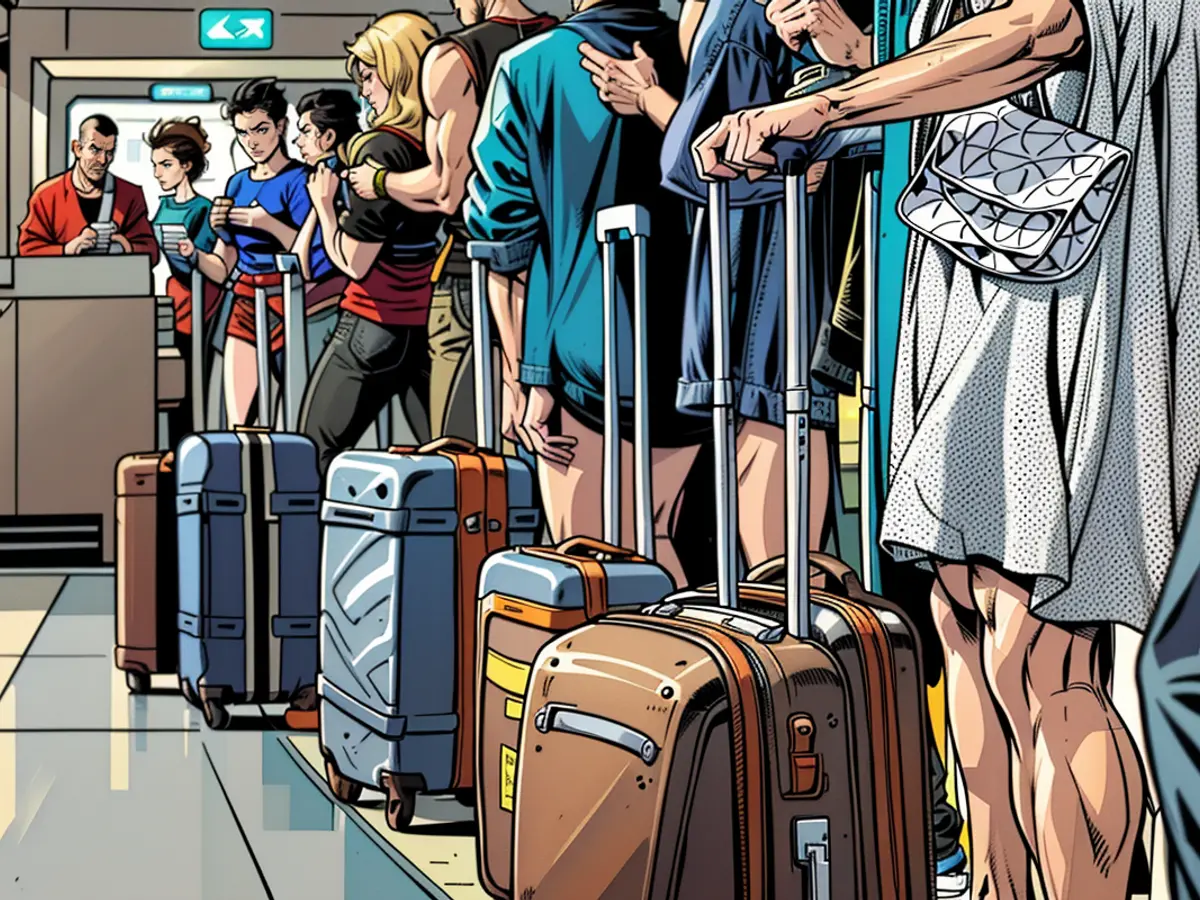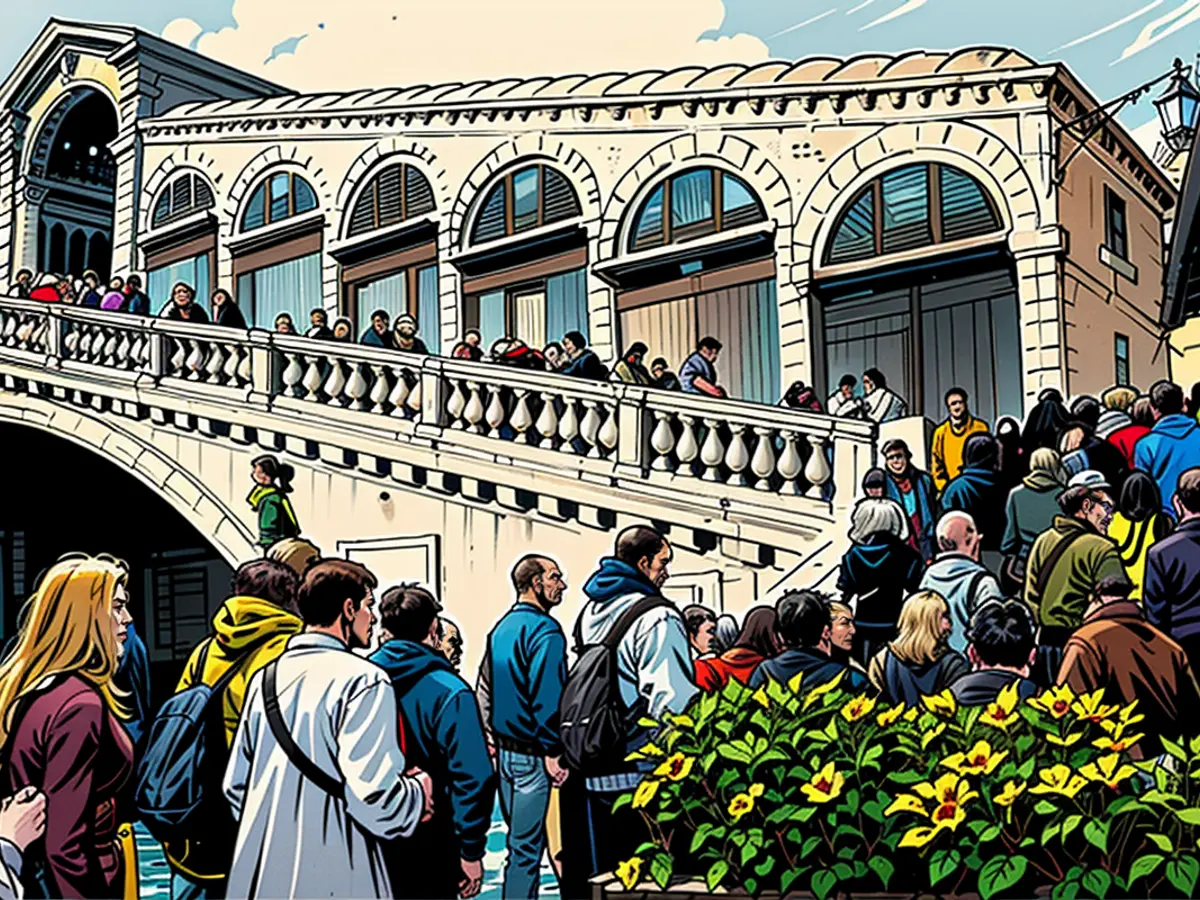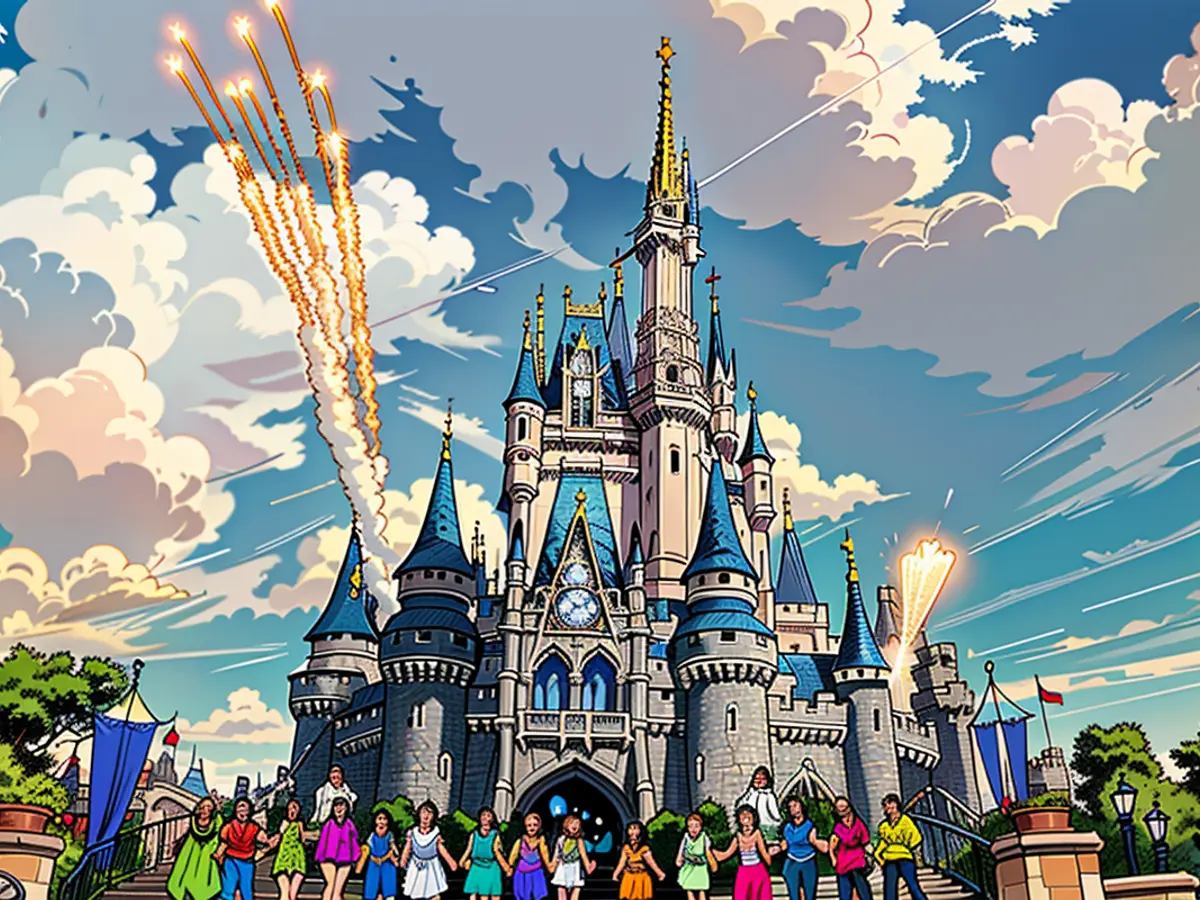The impact of Europe's tallestbridge on redefining its geographical landscape
Often shrouded in fog, making it feel like cruising through the clouds, this renowned structure has its own visitor center, leading many to plan trips specifically to traverse it. It's even discernible from the expanse of space above.
But the Titanic Bridge is not what comes to mind. This is the Viaduct de Millau, a testament to engineering's harmonious union with art. Perched 336.4 meters (1,104 feet) above the Tarn ravine in southern France, and stretching 2,460 meters (8,070 feet) in length, the Viaduct de Millau is the world's loftiest bridge, with a structural elevation reaching 343 meters (1,125 feet).
However, these impressive figures fall short of portraying its true essence.
Unlike most famed bridges, which usually span two points of similar elevation, the Viaduct de Millau practically transforms into a counterfeit rollercoaster, following a level path across the valley, as the terrain ascends and descends beneath it. The seven pillars vary in height from 78 to 245 meters (256-804 feet), each meticulously designed down to the last millimeter, ensuring a smooth journey for drivers gliding over the Tarn. There's a 342-meter (1,122 feet) gap between each pair of pillars, large enough for the Eiffel Tower to effortlessly slot in. The pillars are accompanied by seven steel pylons, each standing 87 meters (285 feet) tall, with 11 cable stays fanning out on either side. This ensures the "deck" – the road surface, weighing approximately 36,000 tons, or the equivalent of 5,100 African elephants – remains steady.
At the same time, perfection does not encroach upon beauty. The Tarn Gorges region is a protected landscape, and instead of deteriorating the scenery, the Viaduct de Millau accentuates it.
"It's the epitome of a modern marvel and an engineering feat." That's the verdict of David Knight, director of design and engineering at Cake Industries, and an advisor to the Institution of Civil Engineers.
"It's that perfect balance of architecture and engineering that leaves everyone who sees it astounded."
Those residing in the valley below gaze at it in wonder, and those traversing it – the A75, a major north-south route in France – marvel at the gentle curve arcing across the terrain as they approach. "It provides everyone who uses it with a profound sense of awe." says Knight.
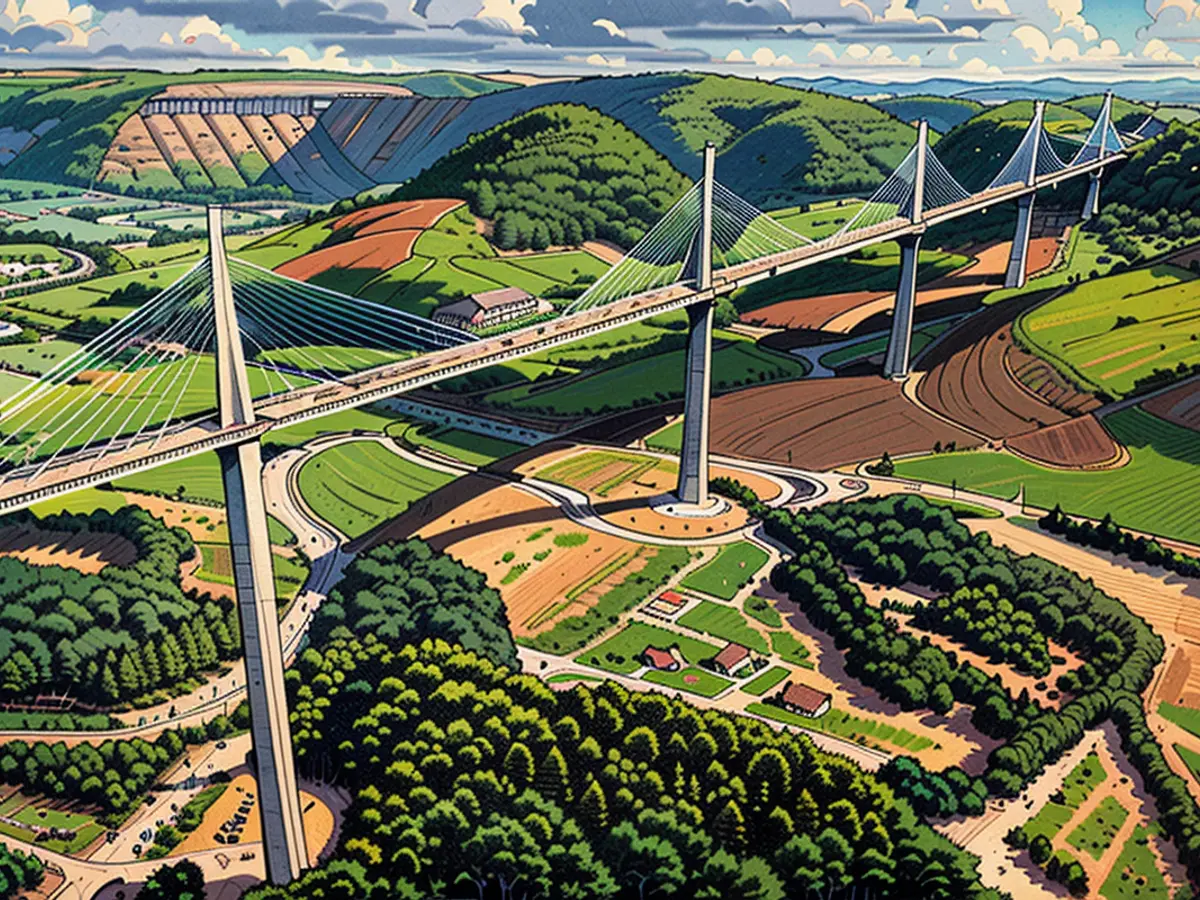
For many, crossing the viaduct is a destination in itself, not just a part of a journey.
So how did this marvel of modern engineering rise in the heart of France? Why did it take two decades of planning, before officially opening to traffic in December 2004? And how did it effectively redraw Europe's map?
A bridge too ambitious?
The answer to these questions lies in geography. The Massif Central is a massive area of highlands carved by deep valleys and ravines, roughly situated in the core of the lower half of France. Spreading across about 15% of the country and bordered by the Alps to the east, it's one of the challenges for anyone traveling north to south or from northern Europe to Spain.
Thus, this bridge – but also a colossal task – was two decades in the making, according to Michel Virlogeux, the engineer who spearheaded the design team – and who initiated work on it in September 1987.
"The primary challenge was not what bridge to construct, but where the motorway would pass," he says.
At the time, the Massif Central was remote, despite its central position. There was a single-track railway line, and the roads "weren't very good," he says. "The central part of France couldn't develop due to a lack of transportation."

Therefore, in the 1980s, the French government decided to upgrade the road network, with then-president Valery Giscard d'Estaing opting for a freeway one of the primary aims was to alleviate the notorious congestion surrounding Millau, where the road plummeted into the valley and crossed the Tarn river at its heart. Every day, there were traffic jams stretching 20 kilometers (12.5 miles) either side of the city.
"Millau was a traffic nightmare for tourists." says Emmanuelle Gazel, the current mayor of Millau. "There were numerous traffic jams. There were kilometers and kilometers of backlogs. It gave a terrible impression of our area... pollution-wise, it was disastrous. And locals took a long time getting from one place to another."
In the words of Lord Norman Foster, who became the architect of the bridge, the area was "a valley of extreme beauty which had become one of France's worst bottlenecks."
The decision to build a bridge around Millau was made in September 1986, says Virlogeux, who, at the time, was the head of the large bridges division of the French administration. But there was one issue: the geography of the area made a straightforward solution impossible. "We examined many locations, but most were unfavorable, and it took almost three years to find a solution." he says.
One proposed plan was to route the freeway east of Millau, keeping the road on the plateaus, with two suspension bridges to cross the valleys on either side. But this wouldn't have allowed for a connection with Millau – "the only significant city between Clermont-Ferrand and Béziers," says Virlogeux – which required economic growth.
They sought assistance from professionals in the field: geologists, geotechnologists, road engineers, and Virlogeux, who had previously designed the Pont de Normandie – a 7,032-foot bridge stretching over the Seine river in the Normandy region's northern area.
The team brainstormed several initial ideas, the first of which was to construct the road to the west of Millau, lowering its altitude into the valley, traversing a bridge at a lower level, then ascending to the plateau, and eventually leading to a tunnel. However, their road engineer, Jacques Soubeyran, had a novel thought.
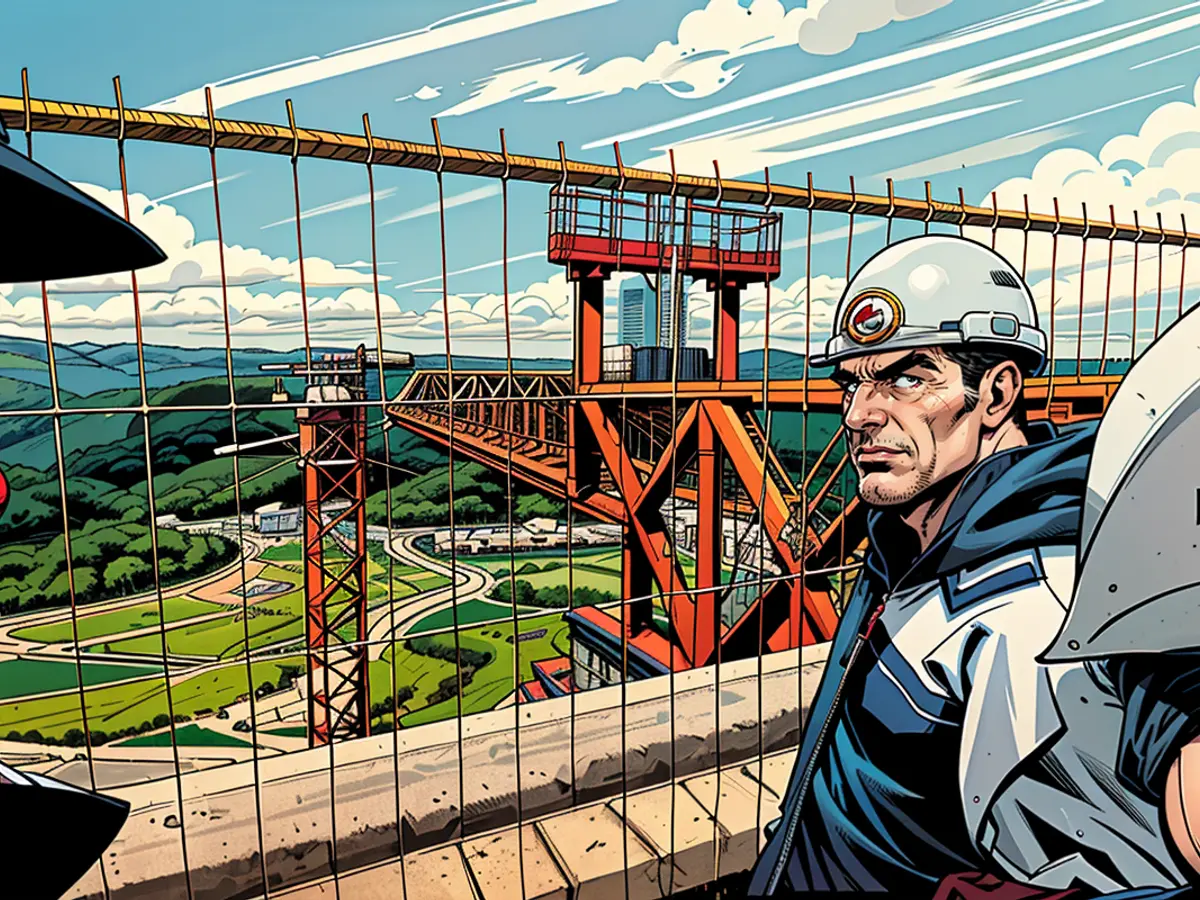
"He questioned, 'Why are we heading into the valley?,'" recalls Virlogeux. "This was a significant surprise. The motorway was positioned 300 meters above the river, and I hadn't even considered the possibility of traveling at a higher elevation. Without hesitation, I acknowledged our folly. We promptly switched our focus to traversing plateau to plateau."
Within eight days, they had produced intricate diagrams of the undulating terrain levels, as well as a proposed height for a road weaving its way across it.
The significance of elegance
They recognized the location for the viaduct, but how should it appear?
Virlogeux instantly recognized that the best choice would be a cable-stayed bridge. "Cable is the most efficient means to carry a load, and it allows for a very slender deck, making it much more appealing to observe," he explains.
Slimness was crucial. Already, there was controversy surrounding the idea of constructing a bridge through such an iconic landscape. To preserve the landscape, it had to "appear tranquil."
Awarding the green light took some time. The French government organized a competition for the bridge's design, and in 1996, the commission was won by a team led by Virlogeux as an engineer (who had transitioned to a different role a year prior) and Sir Norman Foster – now Lord Foster – as the architect. Foster describes their decision to span the valley instead of the river as a "philosophical concept" that distinguished them from other competitors.

However, the local community was dis content with the idea of spoiling their cherished area of natural beauty. They faced what Foster terms a "design challenge... to create something that would improve the landscape, sit gently on the valley's floor – to be the most delicate and light intervention." Virlogeux emphasizes that it had to be "purified and simple."
This delicate landscape, which needed to be upheld aesthetically, proved challenging to navigate.
"The wind forces at this altitude are tremendous, and the pillars must accommodate the bridge's enormous expansion and contraction due to weather conditions," says Foster. And we're not just talking about minor fluctuations. The 2,460-meter (8,070-foot) bridge can expand or contract up to 50 centimeters (1.6 feet) based on the weather. Their solution was to incorporate extension joints.
Fortunately, despite the popular belief that engineers and architects should constantly clash, and despite the assumption that two influential architects and engineers could possibly conflict, Foster and Virlogeux praise each other warmly. Virlogeux credits the relationship as "remarkably straightforward," while for Foster, it was a "meeting of minds." The team held bi-monthly meetings in London while developing the design. "If he asked me, 'Why do you want this instead of that?,' and following that, he'd make a decision in five minutes," explains Virlogeux. "Once there was an intense controversy surrounding the shape of the deck. He asked me what I suggested, and whether I was convinced of its viability. Then he said, 'Architecture cannot contradict scientific necessity.'"
Above the road, the burly pillars "fracture" into two more flexible arms, creating an artistic expression from an engineering necessity.
The same applies to the road's curvature, which gracefully arcs across the valley. It is aesthetically pleasing, and it ensures that there is no visual overlap – and thus confusion – for drivers at such great heights. Simultaneously, the piers become narrower as they approach the roadway, roughly halving from 24 meters wide at the base to 11 meters at the summit.
Their design for a cable-stayed bridge with seven elegant pillars lining the landscape and Foster's description of it as "the snake of a road, remarkably thin like a razor blade," has endured the test of time.
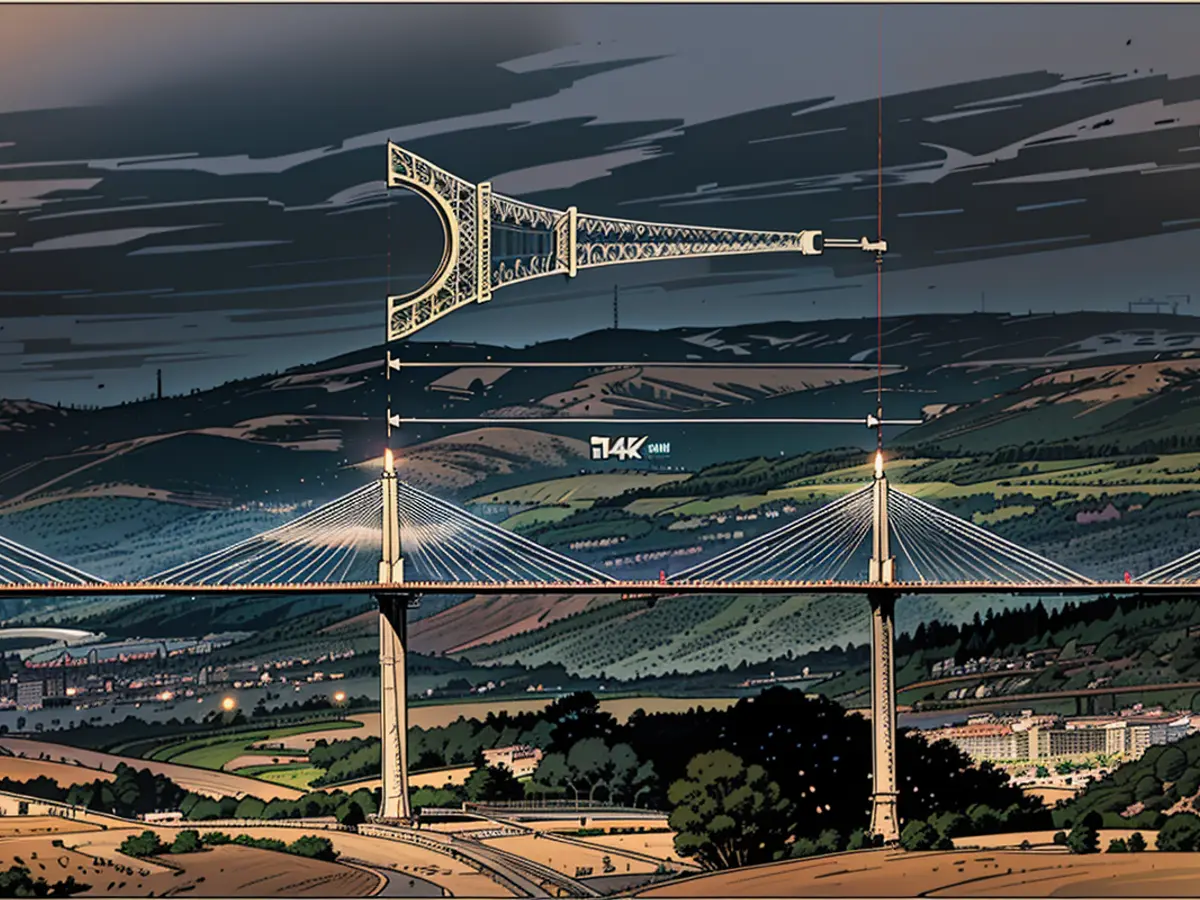
The daunting construction process
If the design wasn't difficult enough, the construction phase commenced in October 2001. The project cost €400 million ($437 million) and was funded by Eiffage, a private construction company that currently holds the bridge's concession. There were 290,000 tons of steel and concrete utilized in its construction, and around 600 construction workers were involved.
"The significant challenge is what happens during the construction process," says Knight. "As you introduce the weight in various locations, it moves in different directions. There are various materials interacting with each other – this is possibly the most challenging aspect of engineering."
Foster calls the assembly of the deck "a true challenge."
"It was assembled serenely and incrementally, launching simultaneously from both sides over temporary structural supports, meeting in the middle with millimeter precision."
Virlogeux recalls the "critical wind situation" that threatened the structure during construction. Each "launching" operation – during which the deck was installed from both sides – would take up to three days, so they carefully examined the five-day forecast prior to starting, to avoid causing damage before the deck reached the next pier.
As the viaduct under construction was raised into place, the team held their breath, questioning if their design would prove effective both aesthetically and mechanically at such great heights. Each aspect of the design, including its impact on the environment, had been meticulously planned. The engineers spent countless hours contemplating the optimal color for the 154 cable stays, ultimately selecting white. Foster, the lead architect, recalls the anxiety he felt, unsure if his choice would blend harmoniously with the sky or clash with the landscape. Fortunately, the white stood out just enough to create an impressive contrast without overpowering the natural surroundings.
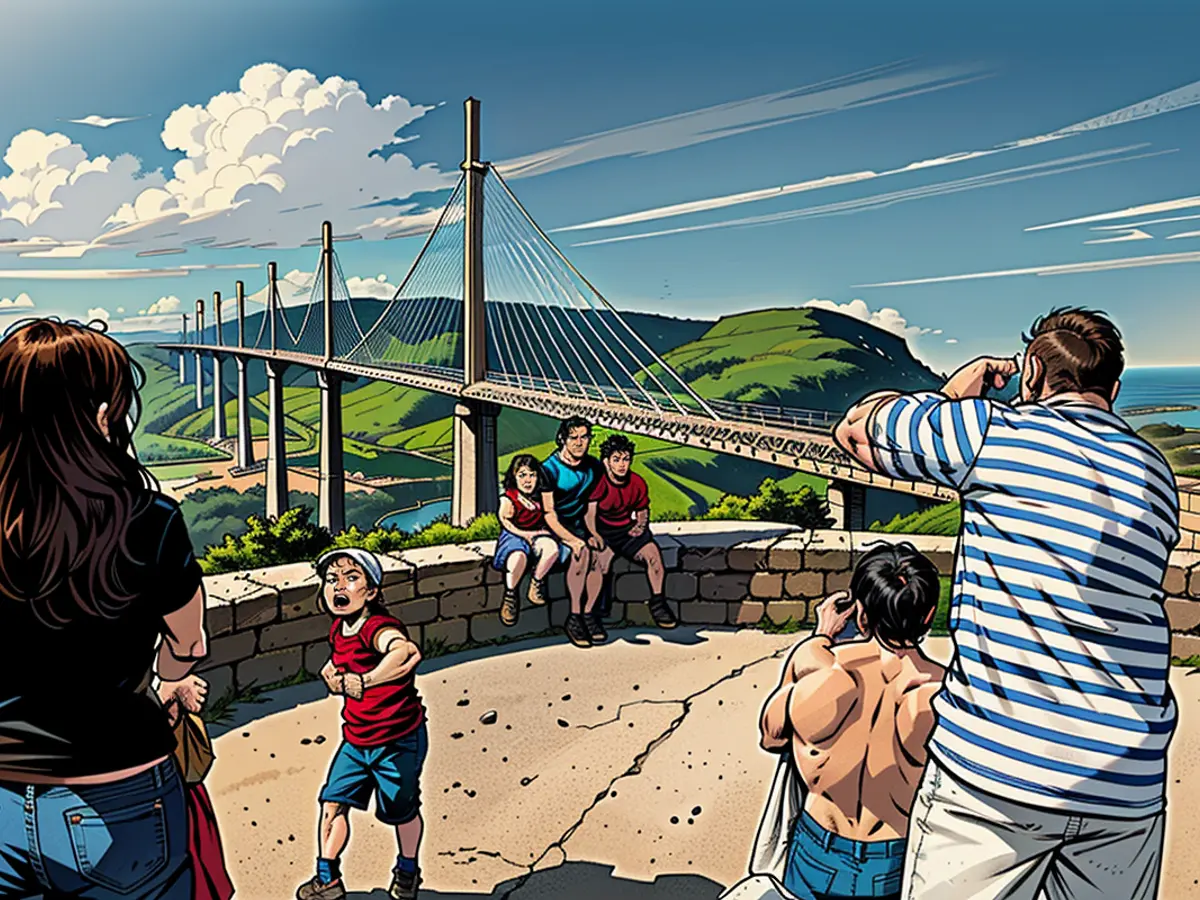
Upon first observing the completed structure, Foster felt a wave of apprehension. He anxiously waited to gauge the public's reaction to the bridge's appearance, as the final decision was irreversible. Virlogeux, the project manager, however, remained optimistic. He was more concerned with overcoming local opposition to secure the construction contract, as obtaining the necessary signatures was, for him, the most stressful part of the process.
The President of France, Jacques Chirac, attended the bridge's grand opening and welcomed the construction workers with enthusiastic handshakes. Two days later, Virlogeux drove across the bridge, feeling a deep sense of satisfaction and fulfillment.
Bridging the divide
Initially, the proposed construction of the viaduct had stirred controversy in the local community. Residents feared that tourists would bypass Millau and drive straight through, leaving the town deserted. Some individuals also expressed concerns that the bridge would negatively impact the area’s breathtaking landscape. However, as the project progressed, the people of Millau began to see the bridge as a potential source of revitalization rather than a detriment.
Gazel, the mayor, noted that tourists visiting the service area to take in the breathtaking views quickly became an attraction in itself. Millions of people flocked to Millau each year, generating a significant boost in tourism and revenues for the local economy. The construction of the viaduct effectively transformed the negative perception of the town and made it a desired destination for travelers.
Millau boasted a fascinating past, with its famous Roman pottery exports stretching across Europe. Tourists could now visit the viaduct, treading along the base of its imposing piers or taking a boat ride beneath it. The viaduct became a symbol of pride for the community and an integral part of its history.
Eco-friendly and innovative
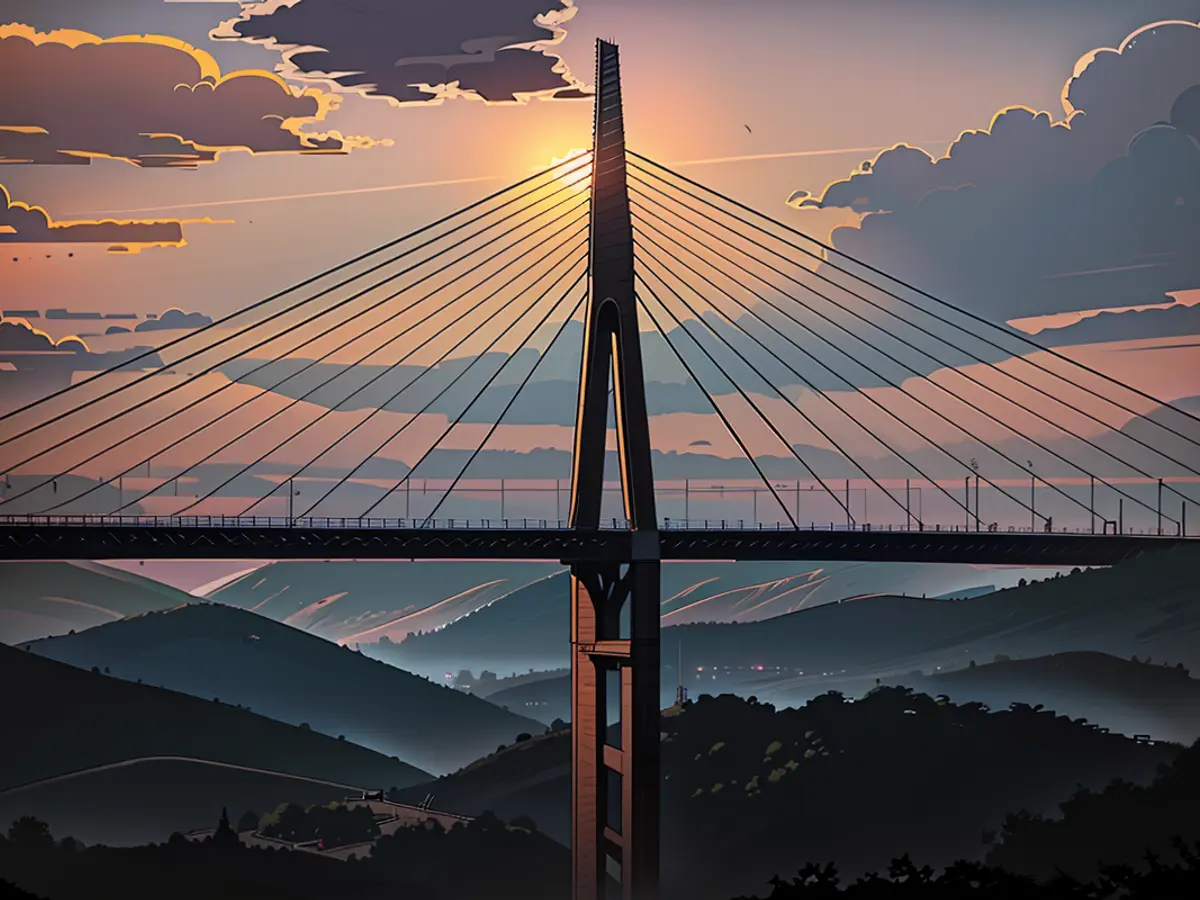
As the Millau Viaduct approached its 20th anniversary, it celebrated a remarkable statistic. Each year, the bridge saved approximately 40,000 tons of CO2 emissions from heavy goods vehicles alone, according to Foster’s estimates – the equivalent of 40,000 trees absorbing emissions over 40 years. The environmentally-friendly bridge had become an architectural marvel, inspiring awe from both locals and visitors.
Foster, the pioneering architect, declared himself delighted by the shift in local sentiment toward the bridge. He believed that a bridge's true role extended beyond merely connecting two points, but also in unifying communities and fostering communication. Gazel, the mayor, concurred, stating that the bridge had propelled Millau onto the world stage and elevated the town’s status as a coveted travel destination.
The architectural prowess of the Millau Viaduct remained a testament to the innovative vision and determination of its builders. Virlogeux, the project manager, admitted pride in his creation, confident that it would remain a beacon of inspiration for generations to come.
The Viaduct de Millau offers a smooth journey for drivers, with the "deck" remaining steady due to the careful design and engineering of its seven pillars and seven steel pylons. (contains: 'engineering')
Many tourists visit Millau specifically to cross the Viaduct de Millau, which has not only boosted the local economy but also transformed the town into a desired travel destination. (contains: 'travel')
Read also:
- Fear of escalation in the Middle East: US Secretary of State Blinken travels to the region again
- Government circles: US Secretary of State Blinken to travel to Middle East again
- Bridging days 2024: How you can double your vacation this year
- Germany has wanderlust: how tour operators and airlines are looking ahead to the next travel year


